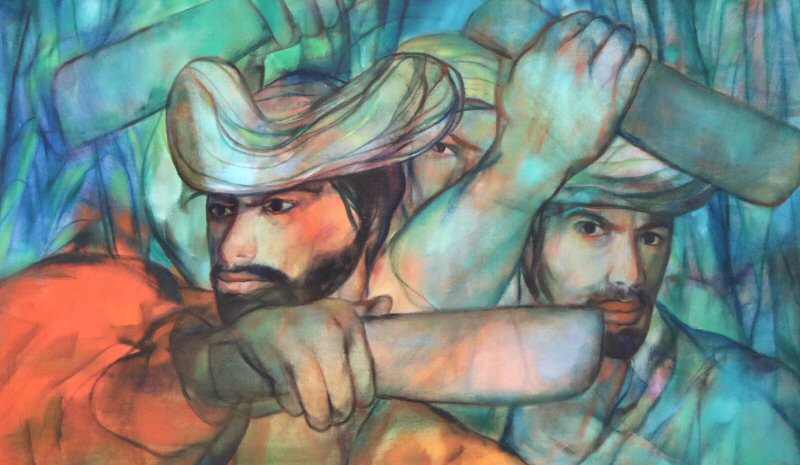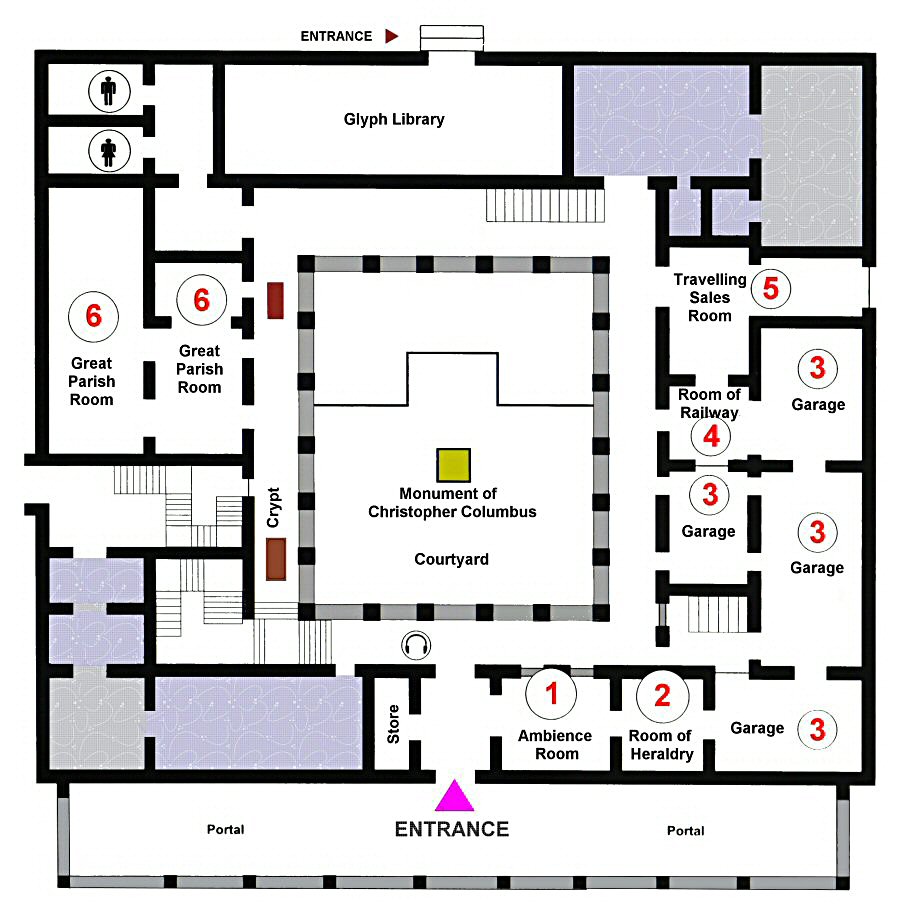
THE MEZZANINE
There are four permanent exhibition
rooms on the mezzanine (entresuelo).
The Sala de
Pinacoteca (Art Gallery Room) is the right place for the lovers
of painting. The walls are adorned by a set of important
artworks of various Cuban painters that are from the academy or
the representatives of avant-garde modernism.
Some distinguished artworks are as
follows (please click on the line):
●
Bodegón (Still Life) by Miguel Melero (1892)
●
Paisaje Cubano (Cuban Landscape) by Esteban Chartrand (1879)
●
Vista del Morro (View of Morro) by Aurelio Melero (1913)
●
El Charco del Mamey (the Puddle of the Mamey) by Domingo Ramos Enriquez (1948)
●
Muchacha (Girl) by Fidelio Ponce León (1932)
●
Pescador (Fisherman) by Leopoldo Romaňach y Guillén (20th century)
●
Gestáltica by René Portocarrero (1946)
●
Parque de la Fraternidad (Fratenity Park) by Angel Acosta León (1959)
●
Los Gloriosos Días Presentas (The Glorious Days Presented) by Servando Cabrera Moreno (1980)
●
Escena de Campo (Field Scene) by Armando GarcÍa Menocal (1917)
The next room, Sala de Cementerio de
Espada (Room of Espada Cemetery Room), is accessed by a narrow gallery on the right side of the
entrance of the Sala de Pinacoteca. In this room, many
gravestones, sarcophagus pieces and three iron coffins
are exhibited that remained from the Cementerio de Espada,
Havana's first official cemetery. The cemetery was closed in
1878 after 72 years of service. The exhibited pieces, donated by the
families, give us enough
insight into the 19th century funerary art that also reflects
the customs and the economic power of the upper classes in
Havana. The sacrophagi of
the French painter Jean Baptiste Vermay (1786-1833) and the Rear
Admiral Pedro Claudio Du'Quesne y Correur de Sercourt, the IV.
Marquis Du'Quesne, are good preserved. On the wall you will see
the oil painting on paperboard by Manuel Mesa Cubillo (1984),
representing the execution of the medical students.
The sculptures that are exhibited in the
Sala de Estatuaria y Lapidaria
(Statuary and Lapidary Room) are mostly woman figure. There are also
the busts of Roman emperors and Greek philosophers. Some
inscriptions made of Most of these marble statues
witnessed the life in Havana in the 19th century, when they were ennobling the streets. The economic and cultural development of the island in the 19th century increased the demand for the stonework that gave rise to the abundant marble entrance to the island. Consequently, many elegant marble shops opened in Havana and many Italian sculptors visited the city, as they received orders from individuals and the cabildo for courtyards, streets and squares. In the room
Sala de Metalurgia
(Room of Cuban Coppers) a great diversity of domestic objects
can be seen, produced by the Cuban coppersmiths, such as the
candlesticks, water boiling pots, saucepans without handle,
vessels etc., and by the ironsmiths like horseshoes, nails,
spearheads, iron pieces used as weights etc. Also two miniature
cannons are on the display. In the 16th
century there were a few artisans that could forge the iron, but
the increase in the construction of the buildings and in the
production of the shipyards, as well as in the demand for
agricultural and industrial products led to the establishment of
many ironworks in the city by royal order in the last decade of
the 16th century.

 ×
×